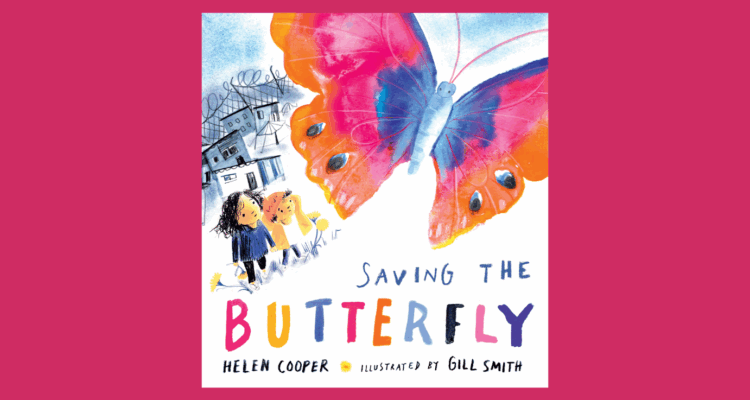Bringing Shared Reading to Kensington Palace
Great Shared Reading doesn’t need much in the way of surroundings: some people in a space, with chairs to sit on, a story or a poem to read. But over the last 12 months, some of our volunteers at The Reader have had the opportunity to run Shared Reading groups in the beautiful surroundings of Kensington Palace in London.
Liz Ison, Lee Seabourne and Elizabeth Kiem describe their experiences and reflect on how Shared Reading can work in the context of a historic house setting.
How did you come to do Shared Reading at Kensington Palace?
 LIZ : As a volunteer for The Reader I was invited to attend a one-day workshop at Kensington Palace as part of the Palace’s ‘Build Your Own Discovery’ (BYOD) scheme. The scheme aims to open up the Palace and its galleries (at least the part not inhabited by current members of the Royal Family!) to local groups in order to attract visitors who might not have considered a visit there, been put off by the entrance fee or a sense that it’s not a place for them.
LIZ : As a volunteer for The Reader I was invited to attend a one-day workshop at Kensington Palace as part of the Palace’s ‘Build Your Own Discovery’ (BYOD) scheme. The scheme aims to open up the Palace and its galleries (at least the part not inhabited by current members of the Royal Family!) to local groups in order to attract visitors who might not have considered a visit there, been put off by the entrance fee or a sense that it’s not a place for them.
After the training I ran several sessions incorporating Shared Reading at the Palace both for my existing Open Age Shared Reading group and for other members of Open Age who had not experienced Shared Reading before (Open Age provides 350 weekly activities for the over 50s across three London boroughs).
LEE: I had been facilitating a Shared Reading group in North Kensington for over a year, and when we completed our novel The Mill On The Floss, I had to step back from our weekly sessions due to personal commitments. I didn’t want to lose my relationship with The Reader and my manager, Rosie, suggested I find out more about an outreach programme that had been developed at Kensington Palace for a diverse range of community groups. I went along to an introductory training day and saw at once the possibilities of combining Shared Reading with the aims and objectives of the initiative.
ELIZABETH: I was asked to represent The Reader at an all day workshop run by some kindred organisations at the Palace. I was selected largely because the event was for ex-offenders making fresh ties in the community, and my experience was leading reading groups in Brixton Prison. The hosts, splendid facilitators from InsideOut and Plias Resettlement, were inspired by the location to suggest as a theme: “time inside,” encouraging us to consider what it would be like to be a young princess (and then Queen) imprisoned by the circumstances of royal blood, rather than life choices.
How did you plan your session? And what did you do?
LIZ: After the initial training, I made a preliminary visit to the Palace, talked to the BYOD staff and looked round the galleries. We had been given a lot of information and ideas from the staff and I also did some further reading about Queen Victoria and her diaries.
For my first session, which I ran jointly with Geoff Brown, a member of the OpenAge staff, we took participants on a tour of the Victoria rooms. These rooms featured many quotes from Victoria’s diaries and I read out other relevant extracts from her diaries so that we heard Victoria’s words on childhood, love, grief, aloud within the setting e.g. in the room where she met her privy councillors on the day of her ascension; we read the diary  extract describing how she, aged 18, was woken in the early hours to be told of King William's death and that she was now Queen.
extract describing how she, aged 18, was woken in the early hours to be told of King William's death and that she was now Queen.
After the tour, we sat down to read some Christmas diary extracts written by Queen Victoria and uncovered a poignant narrative from excited girl, newly married bliss, family Christmases to unbearable grief and loss. We also read some of the verses by Tennyson that she had found comforting after the death of her husband Prince Albert.
Thy voice is on the rolling air;
I hear thee where the waters run;
Thou standest in the rising sun,
And in the setting thou art fairIn Memoriam A.H.H (1849), Lord Alfred Tennyson (taken from Queen Victoria’s album consolativum)
 For subsequent sessions, I didn’t look to achieve such a close connection between history and text. So, for example, after viewing the special exhibition of Princess Diana’s dresses we read a short story by Virginia Woolf, The New Dress, about a woman’s anguish at turning up to a party in a new dress that didn’t conform to the current fashions. In another session we took Shared Reading outside, and standing beneath Queen Victoria’s statue we read a passage describing her outings to Kensington Gardens when she was 3 years old, on a donkey. We looked at the bank of daffodils before returning inside to read Wordsworth’s ‘I wandered Lonely as a Cloud.’
For subsequent sessions, I didn’t look to achieve such a close connection between history and text. So, for example, after viewing the special exhibition of Princess Diana’s dresses we read a short story by Virginia Woolf, The New Dress, about a woman’s anguish at turning up to a party in a new dress that didn’t conform to the current fashions. In another session we took Shared Reading outside, and standing beneath Queen Victoria’s statue we read a passage describing her outings to Kensington Gardens when she was 3 years old, on a donkey. We looked at the bank of daffodils before returning inside to read Wordsworth’s ‘I wandered Lonely as a Cloud.’
LEE: When planning my sessions, I had the Shared Reading model at the heart of what I did but used the additional resources available at Kensington. I decided a maximum of twelve people would be practical for walking around the Palace rooms and comfortably reading a short poem in those public areas. We then returned to a private room where most of our reading and conversation took place. I added the activity of having artefacts from the Palace’s archive collection, which the group was able to take in their hands and talk about, particularly in relation to the texts I had chosen to read. My experience working at a London museum, as a hands-on history volunteer was invaluable in getting the best out of this part of the session.
Each of the three sessions I delivered had a different focus: Kings, Queens and Courtiers, Queens and Princesses, and Victoria Revealed. I researched and chose a range of poems and prose, which either linked directly to the subject or contrasted with life at the Palace. For example, we read an extract from Charles Dickens’ Bleak House which contrasted to the upbringing Queen Victoria experienced at Kensington Palace.
ELIZABETH: Anticipating as many as 20 attendees, I ruled out the idea of reading anything long enough to require breaks for discussion. It would have to be a poem that could be read all at once and then, with some encouragement, again…
 As much as I liked the idea of “HM Prison and HM Palace,” I also wanted something that would represent what The Reader’s intentions are towards sharing words in time. I canvassed many fellow Readers for selections and came up with several contenders, including ‘The Pedigree’ by Hardy, ‘Ars Poetica’ by Archibald Macleish and Shakespeare’s Henry IV (‘Uneasy is the head that wears the crown’).
As much as I liked the idea of “HM Prison and HM Palace,” I also wanted something that would represent what The Reader’s intentions are towards sharing words in time. I canvassed many fellow Readers for selections and came up with several contenders, including ‘The Pedigree’ by Hardy, ‘Ars Poetica’ by Archibald Macleish and Shakespeare’s Henry IV (‘Uneasy is the head that wears the crown’).
But then, in browsing through some back issues of The Reader magazine, I came across an excerpt of “Articles of War” by Graham Swift (found in The Reader Issue 61 and from England and Other Stories, 2015). Here was story and back-story: a naval officer uneasy in his position of command; a ship that played a role both as the prison of Napoleon and the coronation of Victoria; a very short passage in which a superior considers his relation with his subordinates, musing “contact, or non-contact, might only make him think of his hidden respect for them, or even – and this was mutinous indeed – his kinship.” I knew immediately this was the selection.
How did your session(s) go?
LIZ: For those that came to several of the sessions, there was a cumulative effect of getting to know the Palace and relaxing into the pattern of exploration of text and place. The feedback received was also positive, with the link between the literature, the objects and the rooms in the Palace being highlighted and commented upon as a way of making people feel relaxed and at ease, as well as being of deep interest.
LEE: The participants were very appreciative of the time they spent at the Palace and my efforts at preparing the sessions. There was a sense of excitement as well from the experience. The feedback suggested that history was really brought to life for them.
ELIZABETH: I had anticipated that the background history about warships being rehabbed as prison hulks would be of interest to this group, but they were more interested in analysing the ambivalent captain in the excerpt. Some sympathised with his feelings, others maintained he had no right to have doubts about his role or his responsibilities. Considering that all of the participants were strangers to one another, it was a pretty revealing conversation with many instances of disagreement. The beauty came in seeing how diplomatic and understanding the group was by nature. They deferred to and referred to each other’s comments. We had just twenty minutes, but it felt as if we had been doing Shared Reading for months!
What do you think are the benefits of doing shared reading in a historic setting?
LIZ: By visiting the Palace on several occasions, by focusing on one object, or highlighting one theme, one room, we were approaching the house in the same way that we approach our stories and poems – slowing down, going deeper, appreciating more, looking again, allowing ourselves to connect with the setting, with the history, to spark new and interesting connections through looking, feeling and talking.
We found connections between objects, rooms, space and the story or poem. It was about being in the space, walking through the space, becoming familiar with the space. It was also about the thrill of spending quiet time in such elegant surroundings – reading Wordsworth’s daffodil poem in what was a Royal bedroom. We felt relaxed, not rushed off our feet (as can often happen when looking round a museum), taking time to enjoy a very small part of the whole. Like any successful Shared Reading session, we read, talked and enjoyed each other’s company and were stimulated by different kinds of writing. With the quirky connections we found between the readings and the Palace and its former inhabitants we came away with a feel of the place, its historic residents, with the written word and with each other.
“It is not without feelings of regret that I shall bid adieu for ever, to this my birth-place…I have had pleasant balls and delicious concerts here…I have had my first Council here too! I have gone through painful and disagreeable scenes here, ‘tis true, but still I am fond of the poor old Palace.”
Queen Victoria, 1837
LEE: Our country is rich in parks, museums and galleries and I believe we can take the tried and tested model of Shared Reading and consider creative ways to promote its benefits in different settings and in partnership with different organisations. Being a Build Your Own Discovery Leader also gives me the opportunity to network with a variety of local community groups and organisations. I have been able to speak about The Reader in our meetings and creative ideas have been sparked for the future. Developing a network of relationships with other organisations can help spread the benefits of Shared Reading.
From what our Readers told me the setting can enhance and not detract from the experience of Shared Reading. While the essential focus should always be on the reading, sometimes a little change can be a good thing.
ELIZABETH: My whole Shared Reading experience has been in a “historic setting.” To be honest, the library at HMP Brixton, a fully functioning Victorian prison, feels more authentically so than the inviting community room at HMP Kensington.
I think the real value in walking through those gates for a workshop was that it encouraged the participants to recognize the intellectual growth that comes with emotional reflection. They learned about history that day, even as they learned about each other, and for some, that makes the experience doubly valuable.
As Valeria Villa, Head of Resettlement of InsideOut recounted to me afterwards: “Some of the words that the clients shared regarding their experience were: insight, interest, education, information, reflection.” Much of that feedback, I believe, is due to the venue. But it lodges with The Reader and the method of Shared Reading.
Share
Related Articles

Storybarn Book of the Month: Saving the Butterfly
This month, as part of Refugee Week (16-22 June), we've been taking a look back at one of our favourites…

Shared Reading in Wirral Libraries: ‘As a kid people read stories to you but as an adult you lose that – and it’s a fantastic thing to do!’
Two Strategic Librarians for Wirral Libraries, Kathleen McKean and Diane Mitchell have been working in partnership with the UK’s largest…

Open Air Cinema and Theatre FAQ’s
If you were able to snap up tickets to our Open Air programme this summer, check below for any queries…


